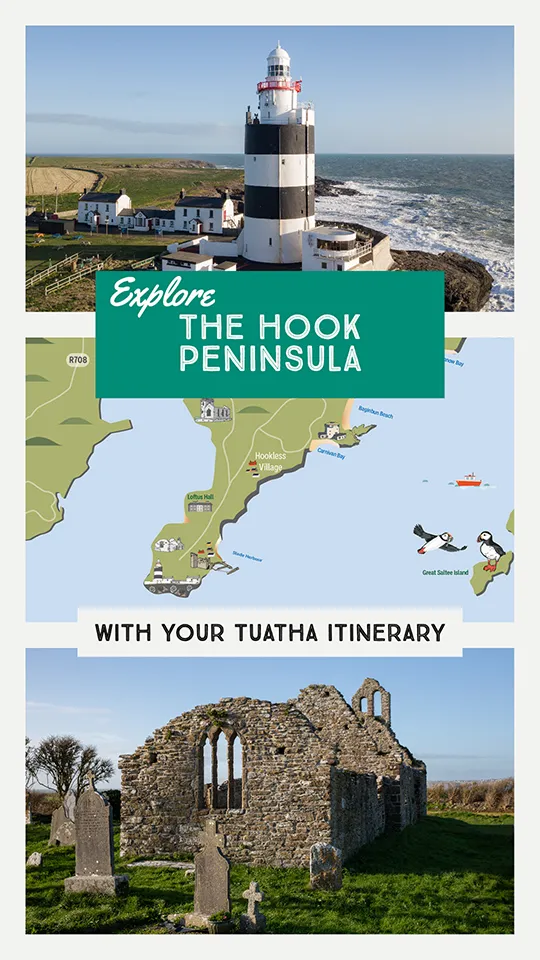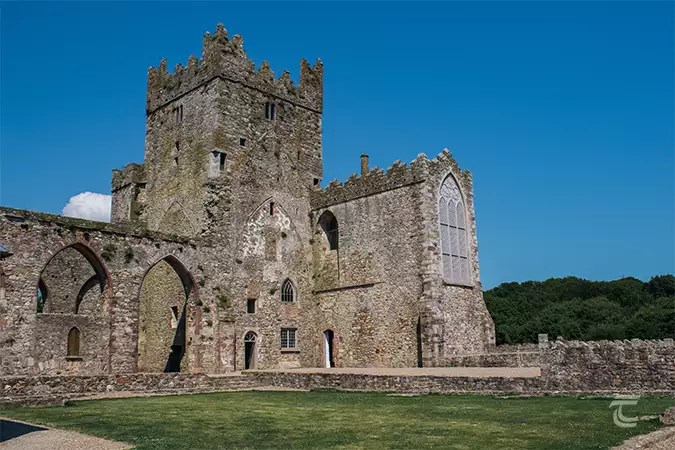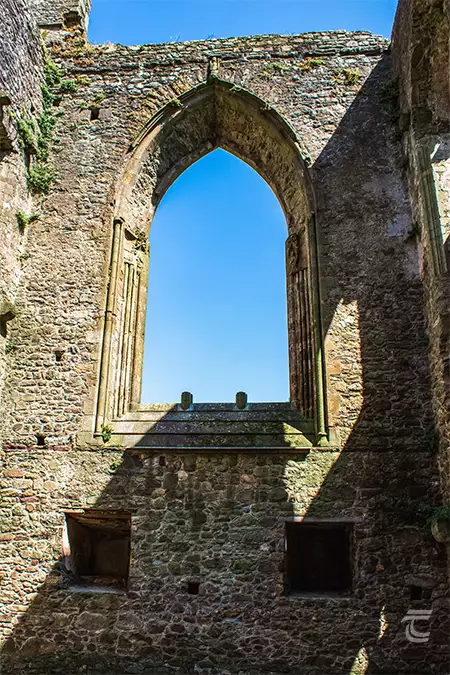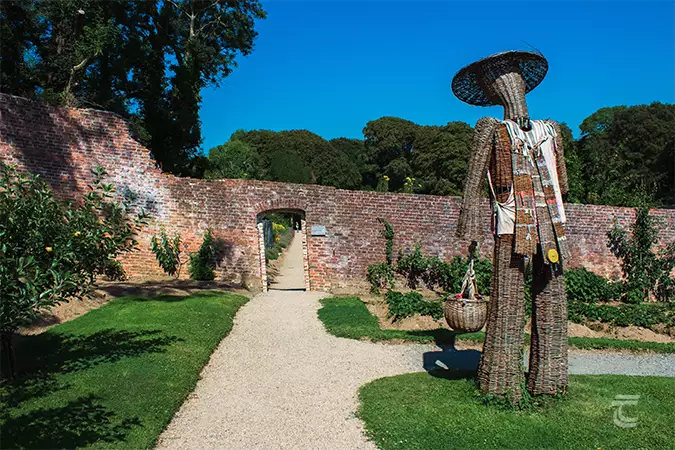Tintern Abbey
Tintern Abbey was reputedly founded in c.1200 when the powerful Norman magnate William Marshal set out on his first visit to Ireland after his inheritance as Lord of Leinster. His ship was struck by a storm off the east coast and was close to foundering. He vowed to God that if he safely reached shore he would found an abbey wherever he landed. He managed to get ashore at Bannow Bay in County Wexford, and Marshal kept his vow and granted 3,500 hectares to the Cistercian Order to establish an abbey. Hence, Tintern was occasionally called ‘Tintern de Voto’ or ‘Tintern of the Vow’. As the Earl of Pembroke, William Marshal was also the patron of Tintern Abbey in Monmouthshire in Wales. He brought monks from Monmouthshire to settle in his new foundation in Wexford, which they named Tintern in honour of their original home.
Tintern was a wealthy and powerful Cistercian foundation, thought to be the third wealthiest Cistercian abbey, after Mellifont and St Mary’s in Dublin. Tintern followed the standard layout format for all Cistercian abbeys in Ireland, based on the mother house of Mellifont. The cloisters were positioned at the south and were surrounded by a range of domestic and spiritual buildings, with a cruciform church to the north.
After the Dissolution of the Monasteries in the 1540s , the lands were granted to Anthony Colclough, an army officer. He and his descendants made extensive changes and modifications to the abbey to change it from a Cistercian place of worship into a fashionable but fortified home.
For practical information about visiting this site Click Here
Tintern Abbey was reputedly founded in c.1200 when the powerful Norman magnate William Marshal set out on his first visit to Ireland after his inheritance as Lord of Leinster. His ship was struck by a storm off the east coast and was close to foundering. He vowed to God that if he safely reached shore he would found an abbey wherever he landed. He managed to get ashore at Bannow Bay in County Wexford, and Marshal kept his vow and granted 3,500 hectares to the Cistercian Order to establish an abbey. Hence, Tintern was occasionally called ‘Tintern de Voto’ or ‘Tintern of the Vow’. As the Earl of Pembroke, William Marshal was also the patron of Tintern Abbey in Monmouthshire in Wales. He brought monks from Monmouthshire to settle in his new foundation in Wexford, which they named Tintern in honour of their original home.
Tintern was a wealthy and powerful Cistercian foundation, thought to be the third wealthiest Cistercian abbey, after Mellifont and St Mary’s in Dublin. Tintern followed the standard layout format for all Cistercian abbeys in Ireland, based on the mother house of Mellifont. The cloisters were positioned at the south and were surrounded by a range of domestic and spiritual buildings, with a cruciform church to the north.
After the Dissolution of the Monasteries in the 1540s , the lands were granted to Anthony Colclough, an army officer. He and his descendants made extensive changes and modifications to the abbey to change it from a Cistercian place of worship into a fashionable but fortified home.
For practical information about visiting this site Click Here
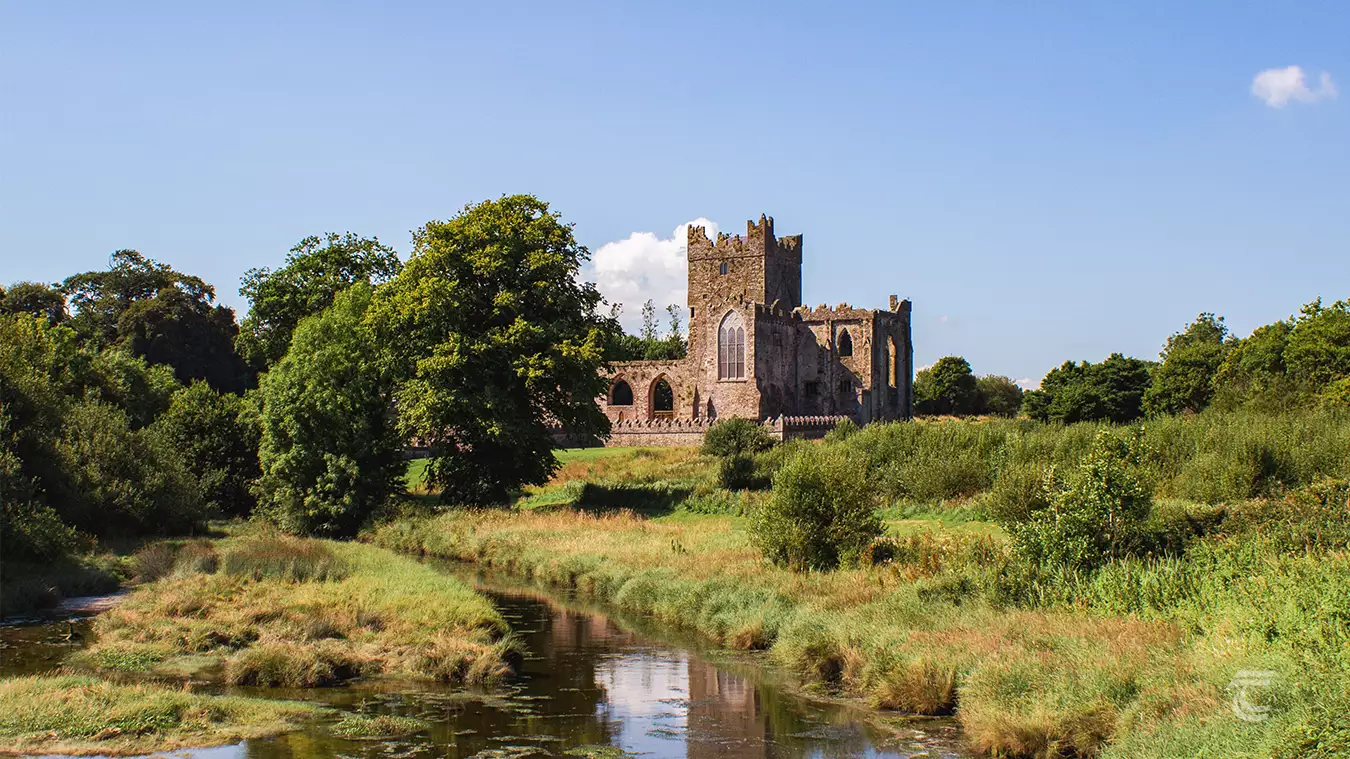
Tintern Abbey • Wexford
Later Features of Tintern Abbey
One of the most identifiable features of Tintern is the castellated bridge over the head of a stream and tidal inlet, which dates to the 18th century. Nearby are the remains of a large limekiln which shows some of the more industrious activities needed on a large estate of the 17th and 18th centuries.
Tintern was granted to the Irish state in 1959 by Marie Colclough. Along with the abbey, the Colcloughs also donated a walled garden that dates to the early 19th century. The local community and Hook Tourism have carried out enormous restoration works in recent years, and the gardens today attest to their hard work and vision. They recreated the elegance of the garden as it would have appeared in 1838 based on cartographic information. If you are visiting Tintern, a visit to the walled garden is highly recommended.
Upper left: Tintern Abbey from main courtyard • Lower left: a quirky figure in Colclough Walled Garden • Right: internal view of medieval window
Top: Tintern Abbey from main courtyard • Middle: internal view of medieval window • Bottom: a quirky figure in Colclough Walled Garden
